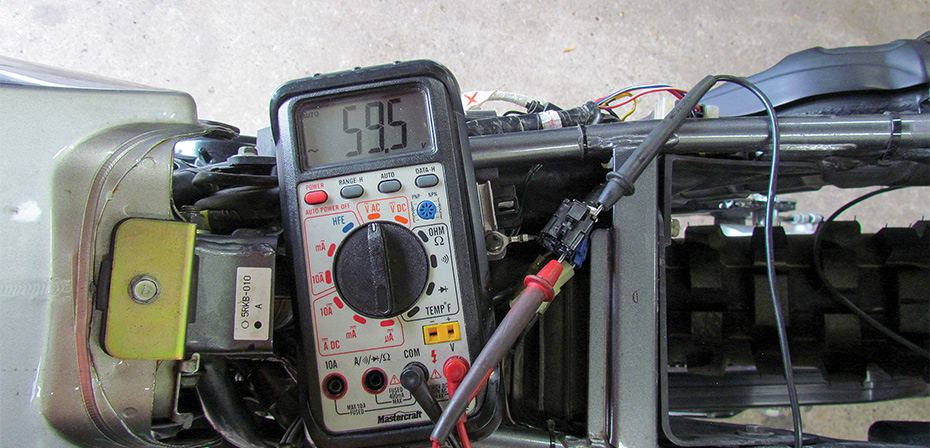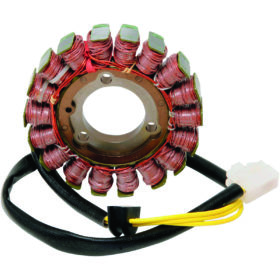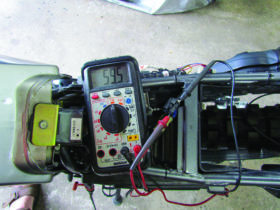We all dread the annoying sound of a dead battery.
It can be rather disappointing to hear the distinctive “TRRRT, TRRRT” sound when you hit the starter on your bike. It can happen at any time, and when it does, I assure you it will be unexpected. It’s the unmistakable sound of a dead battery. Motorcycles experience a small current draw even with the ignition switched off, so it should be expected if your bike has been sitting unused for several weeks. The solution: Just give the battery a charge. However, sometimes the battery can go flat at the most inopportune times, like in the parking lot of a restaurant, after a mid-ride lunch stop. If this happens, it will be entirely unexpected; the bike was running just fine when you shut it off, after all.
Three components comprise a charging system: a battery, a three-phase stator, and a regulator. The battery stores energy to start the bike and run electrics when the engine is running; the stator produces AC current that is used to maintain battery charge while the bike is running; and the regulator converts AC voltage to battery-friendly DC voltage, and regulates voltage so as not to overheat the battery while maintaining its charge. Some bikes have a car-like alternator, which requires a different testing procedure than noted here.
Before assuming the worst, you can check a couple of those components right there in the parking lot. First, check the battery cable connections. A loose battery cable might be just tight enough to allow the bike to start initially, and then loosen enough while riding to prevent it from starting up again. To eliminate this as a possible cause, just put some pressure on each battery cable as you attempt to start the bike. If it fires up, tighten up the battery cables; if not, keep troubleshooting.
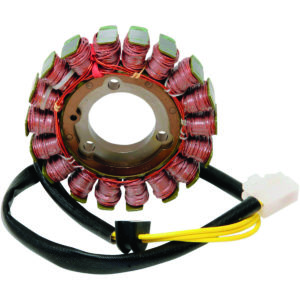 If you can bump-start the bike, you can check if the charging system is working without a multi-meter by watching if the headlight brightens as you rev the engine, thus indicating that the charging system is doing its job; if so, the most likely culprit is a tired battery. If the headlight does not brighten or it dims, you have a charging system problem. Alternately, if you do have a voltmeter handy, set it to read DC voltage and place its probes across the battery terminals. It should read about 12.5 volts at idle, and voltage should increase as you rev the engine (not more than about 14.8 volts). If this test fails, you will need to perform other tests. Note that for test results to be accurate, the battery must be in good condition and fully charged.
If you can bump-start the bike, you can check if the charging system is working without a multi-meter by watching if the headlight brightens as you rev the engine, thus indicating that the charging system is doing its job; if so, the most likely culprit is a tired battery. If the headlight does not brighten or it dims, you have a charging system problem. Alternately, if you do have a voltmeter handy, set it to read DC voltage and place its probes across the battery terminals. It should read about 12.5 volts at idle, and voltage should increase as you rev the engine (not more than about 14.8 volts). If this test fails, you will need to perform other tests. Note that for test results to be accurate, the battery must be in good condition and fully charged.
While verifying the regulator is possible, it’s a complex process that is simplified by first checking the stator. The stator is located within the engine cases; a series of coiled wires are mounted radially around a central magnet, which spins with the engine and generates electricity within the stator. Three heavy-gauge wires exit the stator and then the crankcase, and lead to the regulator. These wires are usually yellow, but might be a different colour, like the white wires with grey bands on my Yamaha XT225.
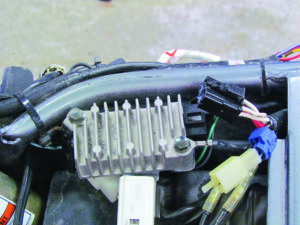
There are three easy tests to perform on the stator, and a failure of any of them means it’s time to replace it. Unplug the stator from the bike’s wiring harness (identified by the three wires of the same colour), and with the multimeter set to measure resistance, check for continuity between all three wires. An open circuit or a reading that is out of spec is no good. Check the service manual for specs, but even without the specs, any big difference between pairs of wires means there is a problem.
Next, check if the stator is isolated from ground. Touch one multimeter probe to any exposed metal on the bike, (the engine case is a good location), and then place the other probe on each of the three wires, one at a time; any continuity here is no good.
Finally, check the stator’s output. Set the multimeter to measure AC voltage, start the engine, place each probe on any two of the three wires, and rev
the engine to about 3,000 rpm. Most stators will produce about 20 volts AC for every 1,000 rpm. If you read between 50 and 60 volts between all of the combinations of pairs of wires, the stator is working perfectly. This leaves only the regulator.
If you can confirm that the wire leading from the regulator to the battery is intact and connected, your final test is already complete: The faulty component can only be the regulator.
Of course, a healthy charging system needs occasional maintenance. If your bike has a conventional battery (not maintenance-free or lithium), check battery fluid regularly. Maintain secure battery connections, and put di-electric grease on charging system connections to prevent corrosion. That way you won’t be stuck at that lunch stop.
Technical articles are written purely as reference only and your motorcycle may require different procedures. You should be mechanically inclined to carry out your own maintenance and we recommend you contact your mechanic prior to performing any type of work on your bike.









